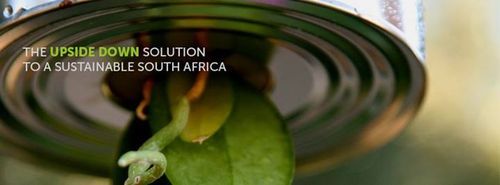
Hooray! It’s unashamed cronyism time! My friends Jody & Di have started a fantastic initiative – Cangro, where they are using upside plants to educate the young and old on how easy it is to grow fruit & veg under your own steam. They sell an urban farming kit which can then be hung with a plant facing downwards. It’s great for plants like tomatoes or beans, where the fruit/veg doesn’t normally do well when planted straight in the soil, because they tend to get nibbled by critters on the ground.
They’ve also run a bunch of competitions where kids see who can grow the biggest and/or most impressive tomato plants, and they’ve seen these kids get SO excited at how wonderfully rewarding the experience can be (as well as how wonderful it is to win a bicycle…)
Contact details here for more info:
083 403 3394 & info@cangro.co.za
Bit of history from their website:
Cangro was founded by siblings, Jody and Diane Kramer. With a little bit of environmental and sustainable knowledge and some forward thinking, they discovered the “magic” of the upside down can.
It all started with a tomato growing in the back garden and a thought…
“How can we grow tomatoes in a fun and practical way?”
… A few days later, Diane and Jody came across 30 000 redundant paint cans earmarked for the dump and so their journey began.
From their very humble beginnings at the Irene farmers market, in which they sold out before they could unpack the trailer, Jody and Diane knew they were onto something special… It was soon realized, from the children’s and teacher’s enthusiasm that this could become a wonderful teaching aid, something that could replace the “old bean and cotton wool”.
With Diane’s exuberant personality and Jody’s practicality, they have formed a very compatible and effective team.
“Everybody has been so enthusiastic and helpful towards the project, we often find we have no control over where this can is taking us. It has been an incredibly rewarding experience!” Jody Kramer